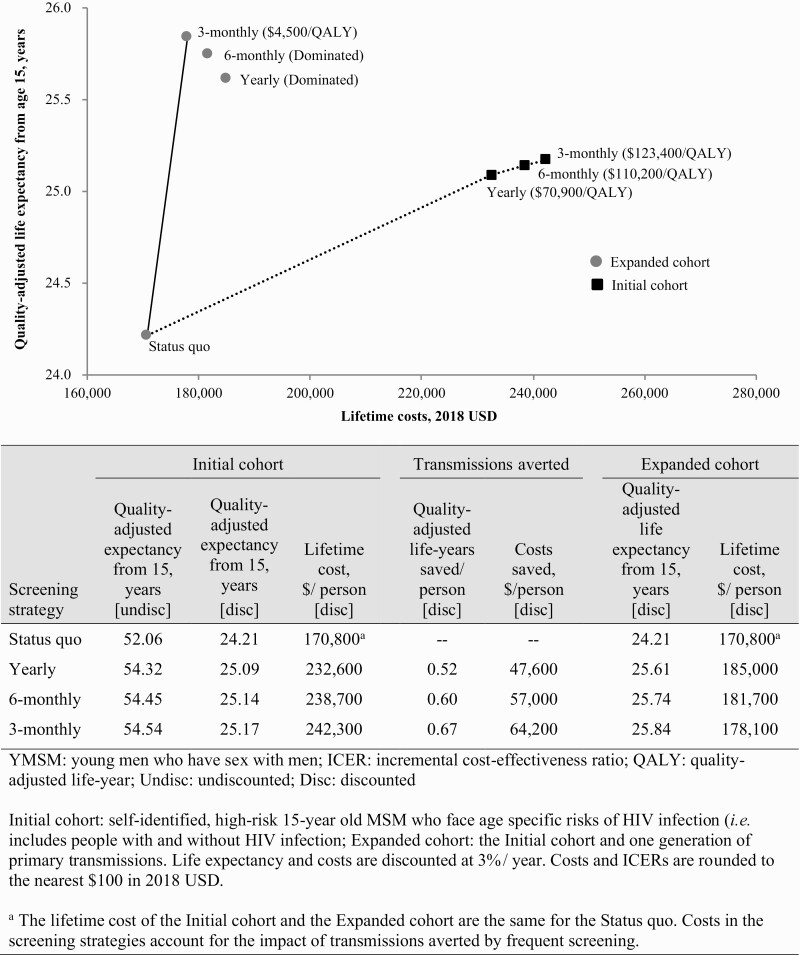Figure 1.
Efficiency frontiers: Cost-effectiveness outcomes, Initial and Expanded cohorts. The Initial cohort consists of self-identified, high-risk 15-year-old men who have sex with men who face age-specific risks of HIV infection (ie, people with and without HIV infection). The Expanded cohort consists of the Initial cohort and one generation of primary transmissions. The vertical axis shows discounted life expectancy, and the horizontal axis shows discounted per-person lifetime cost (USD 2018). Incremental cost-effectiveness ratios (ICERs) are shown next to the strategies which lie on the efficiency frontier (in parentheses, rounded to $100). Strategies below the line represent dominated strategies, or a less efficient use of resources. Cost-effectiveness outcomes including the impact of 15 years of transmissions are shown in circles (Expanded cohort) and outcomes excluding the impact of transmissions (Initial cohort) are shown in squares. Including the impact of transmissions, the ICER of 3-monthly screening remained ≤$100 000/QALY ($4500/QALY); excluding transmissions, the ICER of Yearly screening was ≤$100 000/QALY ($70 900/QALY). Comparing 3-monthly to the Status quo, the discounted gain in quality-adjusted life-years and costs saved per person attributable to averted transmissions was 0.67 quality-adjusted years and $64 200, respectively. Additional details of methods may be found in the Supplementary Materials.

